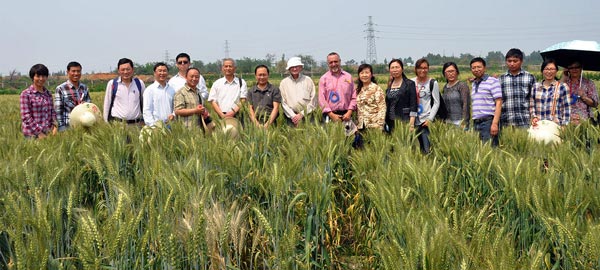MasAgro presents high quality, high yielding maize hybrids to seed producers
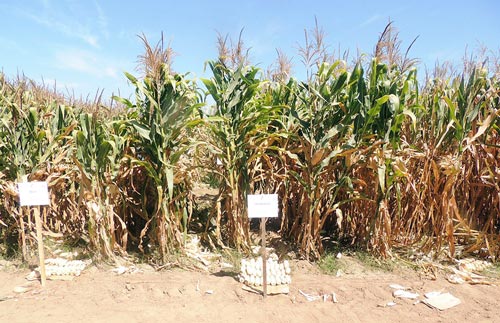
Mexican seed producers and researchers who participate in the Sustainable Modernization of Traditional Agriculture (MasAgro) initiative met recently at El Cantón, a location close to Puerto Vallarta, Jalisco, Mexico, where experimental plots aimed at producing high quality and higher yielding hybrid maize seed are planted.
“The purpose of these experimental plots is to adapt the best production technologies to three mega-environments (highland valleys, tropics, and subtropics), observe the performance of seed targeted for agricultural areas where MasAgro operates, and identify new locations where hybrid maize seed with high physical and genetic quality can be produced,” explained Félix San Vicente, leader of the maize component of MasAgro.
This strategy aims to coordinate the development and multiplication of hybrid maize seed adapted to rainfed areas that are a priority for MasAgro, as well as to promote its adoption among medium- and small-scale maize farmers.
People attending the field day received information on the yield of maize hybrids developed by participants in MasAgro’s Network of Seed Sector Members and Cooperators, which includes 35 Mexican seed companies and agricultural research institutes. Both white and yellow hybrids were presented––seven for highland valleys, five for the tropics, and four for the subtropics. The seeds were derived from simple and triple crosses that have higher adaptation and yield capacity. The materials presented are at the pre-commercial stage, but most are already available to seed companies that belong to the network.

CIMMYT researchers explained that the objective is to endow seed currently being improved using conventional breeding methods with key agronomic traits such as adaptation capacity, high yield, days to flowering, and staggered sowing in order to better synchronize flowering.
Members of the MasAgro network hope to increase the hybrid
maize seed production area in the 2013 fall-winter cycle, thanks to the high adaptation capacity and good performance shown by materials developed for tropical, subtropical, and highland valley production areas targeted by MasAgro.
Also attending the event were representatives of 23 Mexican seed companies, as well as researchers from Mexico’s National Forestry, Agricultural, and Livestock Research Institute (INIFAP) and academics from the Southern Regional University Center of Chapingo Autonomous University (UACh).
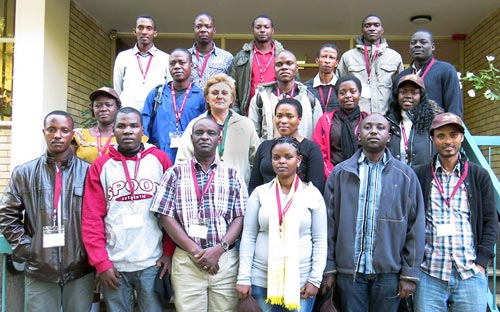 Fifteen young scientists from
Fifteen young scientists from 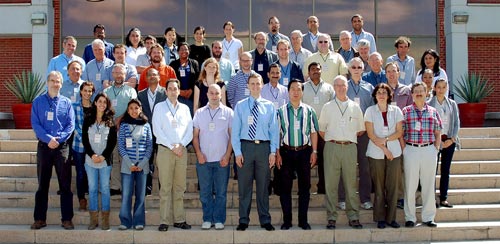 Hot models were the main topic of conversation at El Batan during 19-21 June 2013, when international experts from 18 leading research institutions participated in a workshop on “Modeling Wheat Responses to High Temperature.”
Hot models were the main topic of conversation at El Batan during 19-21 June 2013, when international experts from 18 leading research institutions participated in a workshop on “Modeling Wheat Responses to High Temperature.”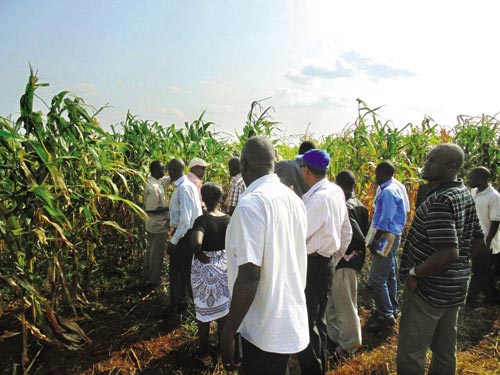
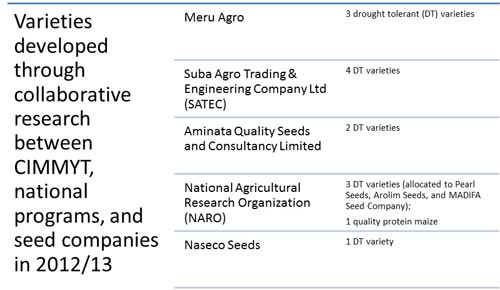
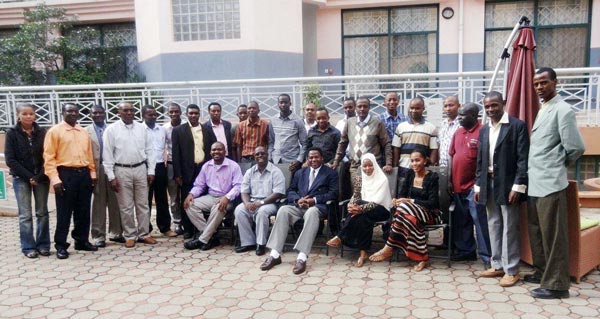
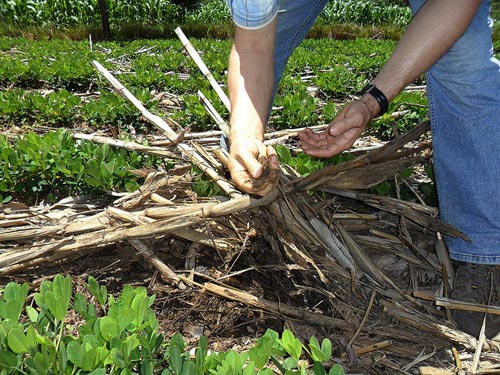 After months of discussions and debates on the scientific evidence regarding conservation agriculture for small-scale, resource-poor farmers in Sub-Saharan Africa and South Asia, a group of 40 scientists reached a consensus on the goals of conservation agriculture and the research necessary to reach these goals. The discussions leading to the signing of the
After months of discussions and debates on the scientific evidence regarding conservation agriculture for small-scale, resource-poor farmers in Sub-Saharan Africa and South Asia, a group of 40 scientists reached a consensus on the goals of conservation agriculture and the research necessary to reach these goals. The discussions leading to the signing of the 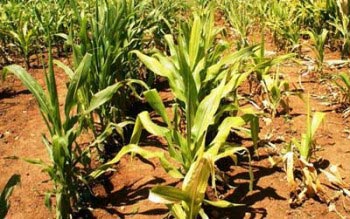 The maize lethal necrosis (MLN) disease first appeared in Kenya’s Rift Valley in 2011 and quickly spread to other parts of Kenya, as well as to Uganda and Tanzania. Caused by a synergistic interplay of maize chlorotic mottle virus (MCMV) and any of the cereal viruses in the family, Potyviridae, such as Sugarcane mosaic virus (SCMV), Maize dwarf mosaic virus (MDMV), or Wheat streak mosaic virus (WSMV), MLN can cause total crop loss if not controlled effectively.
The maize lethal necrosis (MLN) disease first appeared in Kenya’s Rift Valley in 2011 and quickly spread to other parts of Kenya, as well as to Uganda and Tanzania. Caused by a synergistic interplay of maize chlorotic mottle virus (MCMV) and any of the cereal viruses in the family, Potyviridae, such as Sugarcane mosaic virus (SCMV), Maize dwarf mosaic virus (MDMV), or Wheat streak mosaic virus (WSMV), MLN can cause total crop loss if not controlled effectively.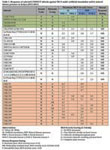
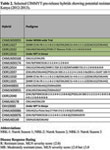
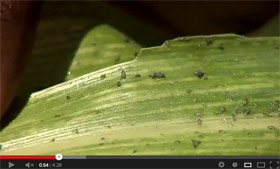
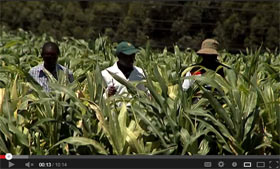
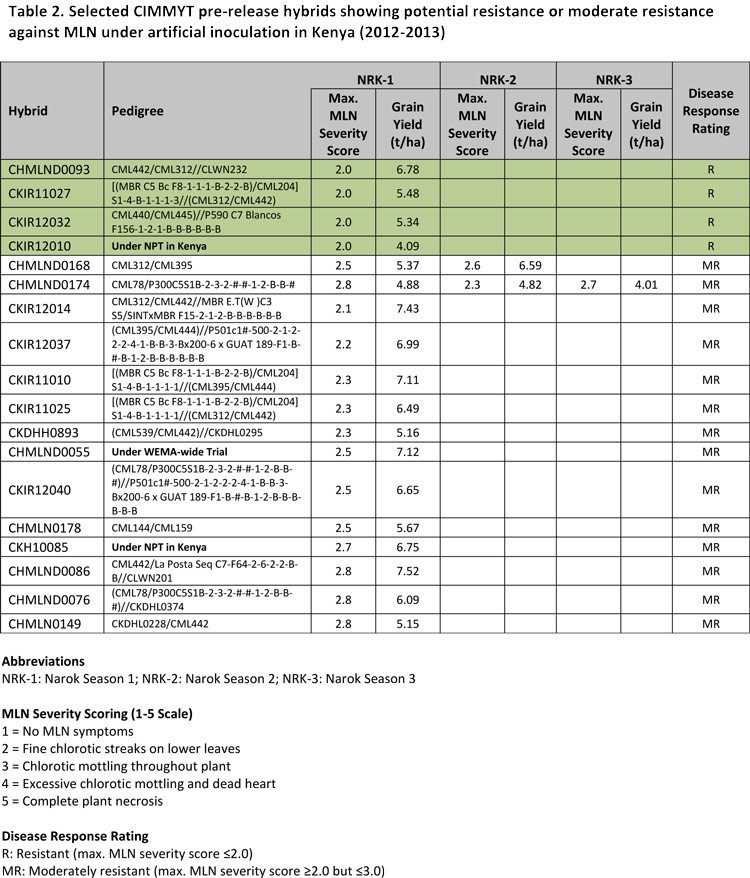 Download table in pdf format
Download table in pdf format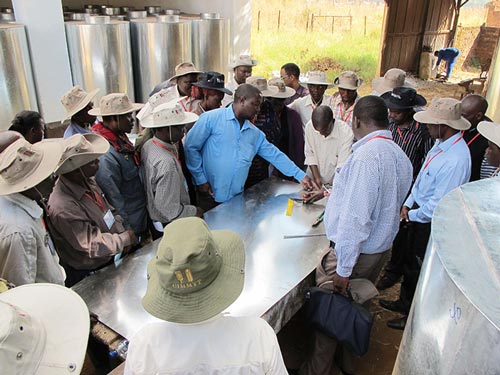 Agricultural extension service staff members in Zambia have been challenged to be the first adopters of metal silos to help promote the technology for effective grain storage. “I implore you, extension workers, to be the first adopters and users of the metal silo technology. As citizens that live side by side with farmers, go and be the first to practice what you will be preaching. You must lead by example,” stated Bert Mushala, the Permanent Secretary, Provincial Administration, Office of the President, Eastern Province, in a speech read on his behalf by his assistant Beenzu Chichuka at the official opening of the Improved Postharvest Management Training Workshop for Extension and Media Personnel held during 27- 28 May 2013 in Chipata, Zambia. “Farmers learn by seeing. Therefore, before they start using the metal silos, they want to see the chief executives, the business executives, extension workers, journalists, and other opinion leaders in the forefront, zealously storing maize in the metal silos,” he added.
Agricultural extension service staff members in Zambia have been challenged to be the first adopters of metal silos to help promote the technology for effective grain storage. “I implore you, extension workers, to be the first adopters and users of the metal silo technology. As citizens that live side by side with farmers, go and be the first to practice what you will be preaching. You must lead by example,” stated Bert Mushala, the Permanent Secretary, Provincial Administration, Office of the President, Eastern Province, in a speech read on his behalf by his assistant Beenzu Chichuka at the official opening of the Improved Postharvest Management Training Workshop for Extension and Media Personnel held during 27- 28 May 2013 in Chipata, Zambia. “Farmers learn by seeing. Therefore, before they start using the metal silos, they want to see the chief executives, the business executives, extension workers, journalists, and other opinion leaders in the forefront, zealously storing maize in the metal silos,” he added.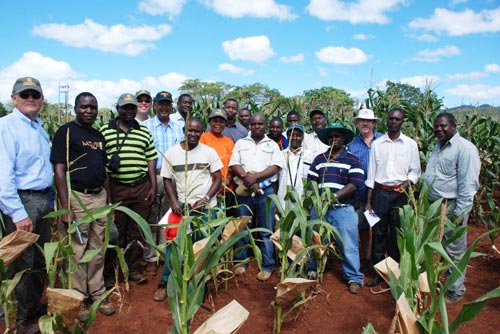 Covering 2,400 km, a multinational team toured Drought Tolerant Maize in Africa (
Covering 2,400 km, a multinational team toured Drought Tolerant Maize in Africa (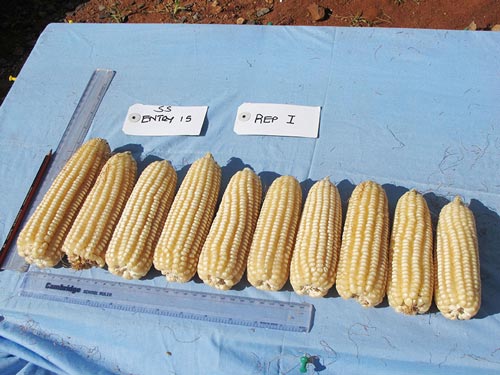 The fourth confined field trial of MON87460, a genetically modified maize variety developed to tolerate moderate drought, recently concluded at the Kenya Agricultural Research Institute (
The fourth confined field trial of MON87460, a genetically modified maize variety developed to tolerate moderate drought, recently concluded at the Kenya Agricultural Research Institute (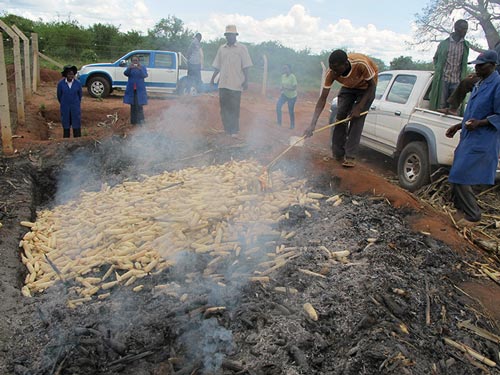
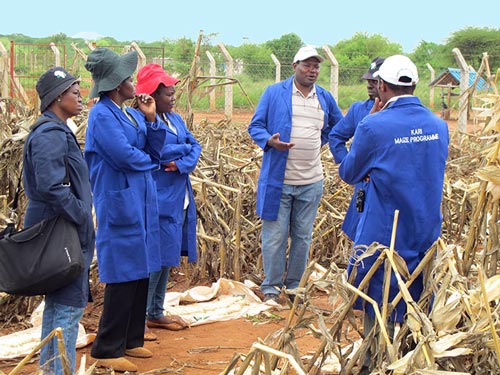 Eveline Shitabule, an inspector with KEPHIS, noted that training helped the participants to understand and follow instructions to ensure compliance. Having competent and well-trained personnel is one of the three pillars of compliance, the other two being a secure facility and records that are accessible and understandable.
Eveline Shitabule, an inspector with KEPHIS, noted that training helped the participants to understand and follow instructions to ensure compliance. Having competent and well-trained personnel is one of the three pillars of compliance, the other two being a secure facility and records that are accessible and understandable. Spot blotch is one of the major diseases in the wheat growing regions of Nepal and the knowledge allowing researchers to identify and understand the disease is thus crucial. A group of 12 wheat technical research staff from Nepal visited Banaras Hindu University (
Spot blotch is one of the major diseases in the wheat growing regions of Nepal and the knowledge allowing researchers to identify and understand the disease is thus crucial. A group of 12 wheat technical research staff from Nepal visited Banaras Hindu University (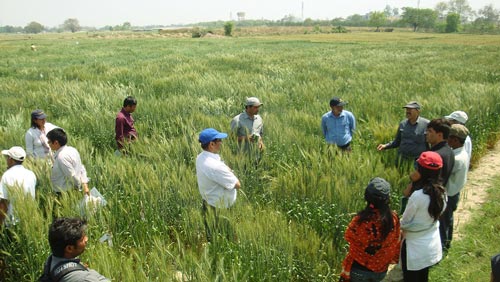 On the second day, participants visited the polyhouse and research station to learn about screening wheat genotypes
On the second day, participants visited the polyhouse and research station to learn about screening wheat genotypes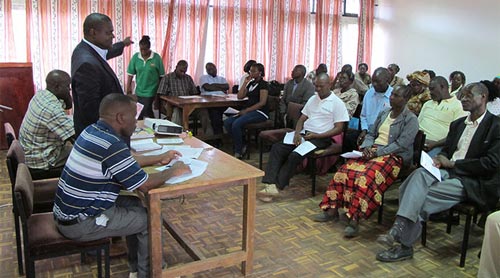 On 02 May 2013, the Water Efficient Maize for Africa (
On 02 May 2013, the Water Efficient Maize for Africa (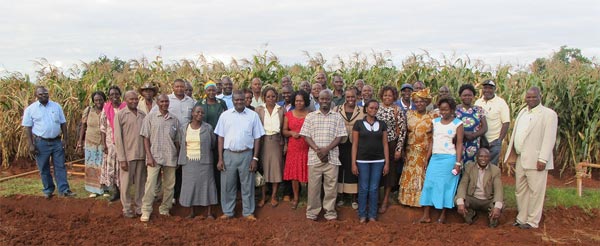
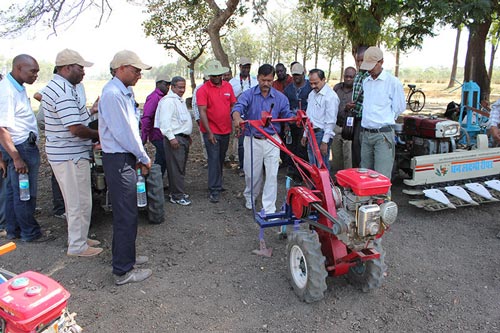 From 29 April to 10 May, 16 agricultural engineers, agronomists, machinery importers, and machinery manufacturers from Ethiopia, Kenya, Tanzania, and Zimbabwe took part in a study tour in India organized by CIMMYT, the Indian Council of Agricultural Research (
From 29 April to 10 May, 16 agricultural engineers, agronomists, machinery importers, and machinery manufacturers from Ethiopia, Kenya, Tanzania, and Zimbabwe took part in a study tour in India organized by CIMMYT, the Indian Council of Agricultural Research (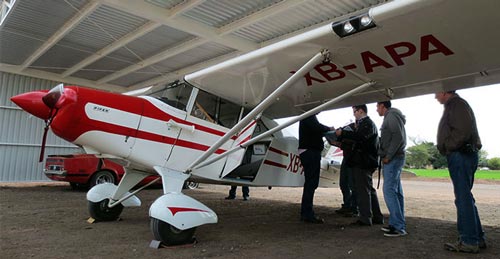
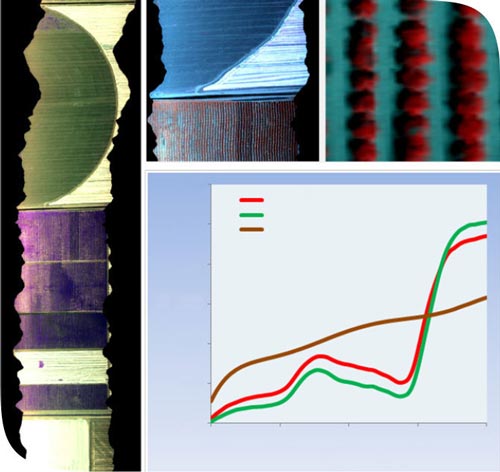
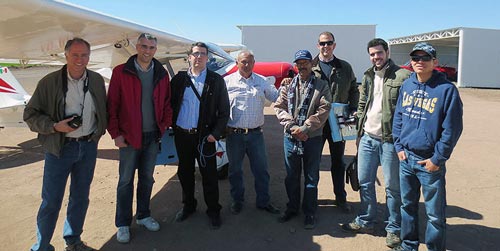
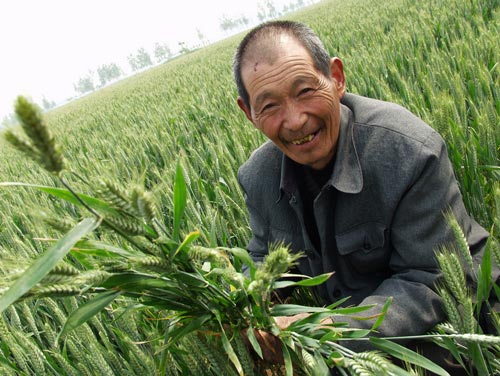 Breeding of durable resistance to stripe rust —the greatest biotic threat to wheat production in the largest wheat producer and consumer in the world, China— was the major theme of a workshop jointly organized by the CIMMYT-Sichuan office and the Sichuan Academy of Agricultural Sciences (SAAS) at the SAAS Plant Breeding Institute in Chengdu, Sichuan province, China, on 18 May 2013. The workshop aimed to promote the adoption of second-generation parents and slow-rusting breeding strategies in spring wheat-producing areas of China and to facilitate collaborative breeding strategies between SAAS and its sister organizations in neighboring provinces. The workshop consisted of a seminar and a discussion session on germplasm and breeding strategies led by Gary Rosewarne (CIMMYT Global Wheat Program senior scientist) and Bob McIntosh (Emeritus Professor at the
Breeding of durable resistance to stripe rust —the greatest biotic threat to wheat production in the largest wheat producer and consumer in the world, China— was the major theme of a workshop jointly organized by the CIMMYT-Sichuan office and the Sichuan Academy of Agricultural Sciences (SAAS) at the SAAS Plant Breeding Institute in Chengdu, Sichuan province, China, on 18 May 2013. The workshop aimed to promote the adoption of second-generation parents and slow-rusting breeding strategies in spring wheat-producing areas of China and to facilitate collaborative breeding strategies between SAAS and its sister organizations in neighboring provinces. The workshop consisted of a seminar and a discussion session on germplasm and breeding strategies led by Gary Rosewarne (CIMMYT Global Wheat Program senior scientist) and Bob McIntosh (Emeritus Professor at the 